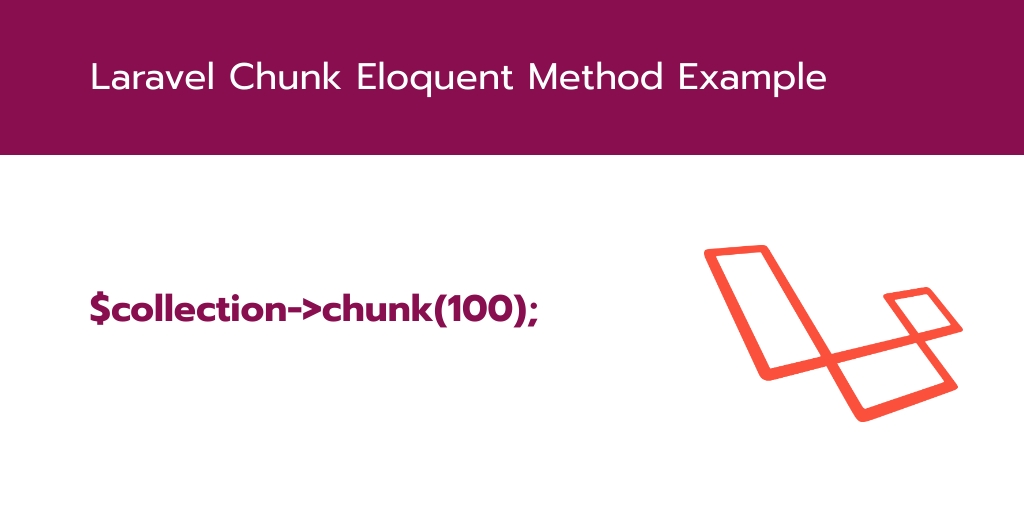If you are new to .htaccess file then this tutorial will be very helpful to know how .htaccess file used to enable or disable certain functionality in apache web server at a run time. If your site is running in WordPress then you should know more about .htaccess file
What is .htaccess?
One of the most common files found on most web hosting servers also happens to be one of the least understood, especially for a large number of novice web hosting clients and website administrators. That file, called “ .htaccess ,” is used to determine any number of important settings, from the 404 Error page that is displayed to site users to the password applied to certain files or directories on the web server itself. Despite its vast functionality and usability, and the essential functions it enables that can only be setup with an .htaccess file, a large number of people simply don’t understand the syntax or functions it permits. They’ve never had to master this file, or they’ve never understood the importance of learning to leverage the vast security settings and permissions-based directory access that .htaccess is most closely associated with.
Website administrators who are looking to get a greater degree of control over their file permissions, directory access, passwords, error pages, and search engine optimization have no better tool in their arsenal than the standard .htaccess file. This article will attempt to explain the “how” and “why” of the .htaccess file, and it will make the functionality of this important document pretty obvious to users of all experience levels.
Generally speaking, an .htaccess file is a server document used to define directory or file permissions, URL rewrite rules, or error messages. It is most commonly associated with the display of a 404 Error message when an end user attempts to go to a URL that simply does not exist. Beyond that, the .htaccess file is commonly used to improve search engine optimization. The use of 301 redirects to guide search engines toward a content’s new location or URL is the chief responsibility of the .htaccess file and the brief lines of code that it contains.
The .htaccess file is also closely associated with the modern permalink structure that dominates content management systems like WordPress.
When the .htaccess file is used to “rewrite” the URL, it uses things like the post’s date, time, category, tags, and other information, to generate a series of readable links with words — rather than numbers — forming the URL.
Search engines actually respond much better to the second form of URL, and that’s why they’ve become so popular in recent years. It’s also why URL rewriting has become one of the most common uses of the .htaccess file, even among website owners and content management administrators who otherwise have no knowledge of the file itself. Most content management platforms are actually able to create and modify the .htaccess document on their own, reducing or eliminating the need for administrator intervention.
The .htaccess file is most closely associated with web hosting packages that are based on the Apache architecture. It is common across both Apache 1.x and Apache 2.x instances, and it has virtually the same functions and programming language between these two iterations of the web’s most popular open source server software.
Do I have an .htaccess file, or am I allowed to have one?
The first thing that most people notice about an .htaccess document is that its filename actually starts with a period rather than with a typical word followed by a file extension. This is done intentionally, as files or folders that begin with a period are considered “hidden” by open source operating systems. That means that the .htaccess file cannot be seen by traditional visitors to a website, and thus cannot be modified or manipulated for malicious purposes.
This unique way of naming the file does have a side effect that sometimes causes a bit of confusion among users, however. Because it is designed to be hidden, it mostly cannot be seen by using a traditional FTP client on a Mac or Windows desktop operating environment. This makes a lot of newer developers simply assume that the do not have an .htaccess file at all, and they’ll begin creating a new file to establish their rewrites, error codes, and directory permissions. In many cases, though, web hosts actually create a standard .htaccess file by default and upload it to the server to be modified by the administrator.
This must be done, typically, by logging into the Plesk Panel or cPanel backend environment and browsing to the .htaccess file via the web-based file browser. This file browser is designed to show hidden directories and files, and it will display the .htaccess file in the “public_html” directory even as traditional web browser and FTP application directory listings tend to hide it. From there, it can be edited using the web-based file browser’s built-in text editor; it can then be saved and automatically uploaded to the server at the same time.
In some cases, web hosts actually might not permit their customers to create or modify an .htaccess file at all. This is often the case on free web hosts or lower-priced operations that are more restrictive on permissions and capabilities. Often, they’ll enable the .htaccess file at a higher price point in order to encourage the adoption of more expensive web hosting plans. To determine if this is the case, simply use the aforementioned web-based file browser to look for an .htaccess document in the “public_html” directory. If one does not exist, attempt to create it and upload it to the server. An error message from the server will indicate that the user does not have permission to create this file; the lack of any such error will simply indicate that the host did not create their own .htaccess file by default, but will not indicate that this file cannot be created and maintained by the customer.
When is it appropriate to invoke the functionality of an .htaccess file?
An .htaccess file is best used to code website errors (like 404 or 301 page errors), URL rewrites, or directory permissions. This is appropriate when pointing to new locations of old content, creating an error page for content that no longer exists, requiring a password to access certain files or directories on the server, or pointing complex numerical URLs to more simplistic permalinks using software like WordPress. Here are some typical uses for the .htaccess file demonstrated an explained:
1. 301 Redirect in .htaccess – Old url to New Url
One of the biggest problems that most websites encounter when moving content is that their search engine ranking drops dramatically right after the move. This is because old content is not properly relocated to the new location, and the search engine itself is never informed that a move took place. Instead, the search engine encounters a 404 Error, which is essentially like telling the search engine that it has arrived at a dead end. That dead end will force the search engine to remove the link from its search results entirely, and the website in question will have to rebuild its reputation as if it is starting from nothing.
To prevent this, search engine optimization professionals everywhere recommend using a 301 redirect as part of the .htaccess file. This error is known as a “permanent redirect,” and it will point the search engine toward the new location of a file or a specific block of content. In addition, it will inform the search engine that the content has moved on a permanent basis, and will not be moving back. This will prompt the search engine robot in question to update the link in its present search results, rather than remove it entirely and force the website to start over and rebuild its high ranking. Here is what a typical redirect looks like:
The above code should be pretty straightforward but, for those who are confused, it breaks down pretty easily. The first part of the code, “Redirect 301,” establishes the type of error and redirection that will occur when an end user or a search engine robot visits the old location of the content. The first URL represents the old link to that content, while the second URL represents the updated location. While this example uses the same domain name in both URLS (domain.com), the 301 redirect can actually be used to redirect users and search engines to an entirely new domain name.
Papertrail is a frustration-free log management tool that allows you to instantly manage logs from different servers.
With Papertrail, you can consolidate your logs in one place with a cloud-hosted log management service that takes typically only minutes to set up. Powerful. Quickly diagnose and fix customer problems, error messages, app server errors, and slow DB queries with full visibility across all logs.
2. Protecting Files or Directories with .htaccess and .htpasswd
Any user who has ever stumbled upon a directory or file and has been greeted with a password prompt has seen the .htaccess and .htpasswd files in action. These two files work hand-in-hand to require a valid username and password when accessing a file; if no such password is provided, they simply display a “Restricted Access” error message and the invalid user is turned away. This is the perfect way to protect sensitive files, administration areas, or sensitive login screens, from malicious hackers and other users who might have less-reputable ideas about what they want to do at a given website.
The first step in this process is to create an .htpasswd file and place it into the directory where the protected file is located. If it’s protecting a given directory, the .htpasswd file should be placed inside that protected directory. The content of the file is really easy to create, as it contains a username and password separated by a colon. Here’s the basic setup:
ValidUser:hard2guessPassword
That single line of text goes into the .htpasswd file and that file is immediately uploaded to the server. If there should be more than one user and password combination that can grant access to the file or directory, they can be listed on separate lines with the .htpasswd document.
To create the authentication screen that requires one of the valid username and password combinations to be entered, site administrators need to add the following series of lines to their .htaccess file, requiring the password document and assigning it to a given directory or file:
AuthUserFile /server/path/of/.htpasswd
AuthType Basic
AuthName "The Title of the Protected Page Goes Here"
<Files "login.php">
Require ValidUser
</Files>
The code above is also pretty easy, as are all implementations of .htaccess permissions and error messages. All that needs to be done is to point to the relevant .htpasswd file, specify the file or director being protected, and then give the page a title. That title will appear within the login form that is automatically generated by the browser when it encounters this restriction.
3. Disabling Directory Browsing
To prevent directory browsing, add this:
Options All -Indexes
However, if for some reason you want to enable directory browsing, change it to the following:
Options All +Indexes
4. Protect Your Site against Hotlinking
If you don’t want your images hotlinked, add this to your .htaccess file:
RewriteEngine on
RewriteCond %{HTTP_REFERER} !^$
RewriteCond %{HTTP_REFERER} !^http(s)?://(www\.)?yourdomain.com [NC]RewriteRule \.(jpg|jpeg|png|gif)$ - [NC,F,L]
Just replace yourdomain.com with your own and you are good to go.
5. Leverage Browser Caching
Another way to speed your site’s load times is via file caching. Here is what you need to add in order to cache files:
<FilesMatch ".(flv|gif|jpg|jpeg|png|ico|swf|js|css|pdf)$">
Header set Cache-Control "max-age=2592000"
</FilesMatch>
You can add more file types (or remove some of them) to the sequence of files listed in this example – do what suits you. You can also use max-age to specify the amount of time in seconds that your files will live in the cache.
6. Disabling Caching for Particular File Types
If you don’t want to cache particular file types, it is easier not to include them in the cache sequence. However, sometimes files might get cached even if you you don’t explicitly list them there and in this case you may want to disable caching only for them. Most often you will want to disable caching for dynamic files, such as scripts. Here is how to do it:
<FilesMatch ".(pl|php|cgi|spl|scgi|fcgi)$">
Header unset Cache-Control
</FilesMatch>
Just pipe the files you want caching disabled for and this is it.
7.Forcing to Download Files
By default, when you try to download a file from a Web server, you get a dialogue that asks you if you want to save the file or open it. This dialogue is especially irritating with large media files or PDFs. If the files you have uploaded to your server are for downloads, you can save users the trouble and proceed straight to download. Here is what you need to set in .htaccess:
AddType application/octet-stream .pdf
AddType application/octet-stream .zip
AddType application/octet-stream .mp3
8. Redirecting to a Secure https Connection
If you are using https and you want to redirect users to the secure pages of your site, use this
RewriteEngine On
RewriteCond %{HTTPS} !on
RewriteRule (.*) https://%{HTTP_HOST}%{REQUEST_URI}
9. Redirect to Maintenance Page + allowing particular IP
Redirecting visitors to a maintenance page or other temporary page is an essential tool to have in your tool belt. Using HTAccess, redirecting visitors to a temporary maintenance page is simple and effective. All you need to redirect your visitors is the following code placed in your site’s root HTAccess:
<IfModule mod_rewrite.c>
RewriteEngine on
RewriteCond %{REMOTE_ADDR} !^123\.456\.789\.000
RewriteCond %{REQUEST_URI} !/maintenance.html$ [NC]RewriteCond %{REQUEST_URI} !\.(jpe?g?|png|gif) [NC]RewriteRule .* /maintenance.html [R=302,L]</IfModule>
10. Redirect www to non-www
Some people prefer to use www.somesite.com, but some people prefer the shorter somesite.com. There isn’t really a right or wrong way to do it, but whatever you choose you can make sure all of your visitors get sent to the same place. With a few simple rules on the server you can choose from non-www to www, or redirecting from www to non-www.
RewriteEngine On
RewriteBase /
RewriteCond %{HTTP_HOST} ^www.yourdomain.com [NC]RewriteRule ^(.*)$ http://yourdomain.com/$1 [L,R=301]
11.Redirect non-www to www
RewriteEngine On
RewriteBase /
RewriteCond %{HTTP_HOST} ^yourdomain.com [NC]RewriteRule ^(.*)$ http://www.yourdomain.com/$1 [L,R=301]
Both of these rules send a full search engine friendly 301 HTTP redirect. They also preserve the entire URL (so yoursite.com/about redirects to www.yoursite.com/about).
12. Visitor IP Banning
<Limit GET POST>
order allow,deny
deny from 42.12.5.34
deny from 193.110.145.185
deny from 212.173.53.
deny from 69.242.
allow from all
</Limit>
13. Disable Hot Linking
The below htaccess code is used to disable hot linking of common file types from other sites, so only your own domain(s) are allowed to reference/ access them. For example, by disabling hotlinking on .gif files, any site not within the allowed list of domains will get a broken image when they try to reference a .gif file that’s on your server
RewriteEngine on
# Options +FollowSymlinks
RewriteCond %{HTTP_REFERER} !^$
RewriteCond %{HTTP_REFERER} !^http://(www\.)?yourdomain.com/.*$ [NC]RewriteCond %{HTTP_REFERER} !^http://(www\.)?yourotherdomain.com/.*$ [NC]RewriteRule \.(gif|jpg|jpeg|png|js|css)$ - [F]
14. Prevent viewing of .htaccess file
If you use htaccess for password protection, then the location containing all of your password information is plainly available through the htaccess file. If you have set incorrect permissions or if your server is not as secure as it could be, a browser has the potential to view an htaccess file through a standard web interface and thus compromise your site/server. This, of course, would be a bad thing. However, it is possible to prevent an htaccess file from being viewed in this manner:
<Files .htaccess>
order allow,deny
deny from all
</Files>
The first line specifies that the file named .htaccess is having this rule applied to it. You could use this for other purposes as well if you get creative enough.
15. Adding Expires Headers in Apache
You can add Expires headers in Apache by adding the following to your .htaccess file
<IfModule mod_expires.c>
ExpiresActive On
ExpiresByType image/jpg "access 1 year"
ExpiresByType image/jpeg "access 1 year"
ExpiresByType image/gif "access 1 year"
ExpiresByType image/png "access 1 year"
ExpiresByType image/svg "access 1 year"
ExpiresByType text/css "access 1 month"
ExpiresByType application/pdf "access 1 month"
ExpiresByType application/javascript "access 1 month"
ExpiresByType application/x-javascript "access 1 month"
ExpiresByType application/x-shockwave-flash "access 1 month"
ExpiresByType image/x-icon "access 1 year"
ExpiresDefault "access 2 days"
</IfModule>
.Htaccess Video Tutorial
Of course, I can’t list every possible use of htaccess here, just the more notable and useful ones (read: for fun and profit). There is a list of Apache Directives you can use for your htaccess files, though not all of them are designed to be used by htaccess. Consult the documentation for the directive you are looking to use and make sure that you can actually use it as an htaccess string.
You should also go through the Apache User’s Guide for more detailed information if you are really serious about making your life easier as a webmaster. You don’t need to update all 4,000 of the pages on your site individually, by hand, in order to change one file reference…honestly!
In any event, I hope you got a better idea of the power available to you through this relatively simple little Clark Kent-ish file. You really do have the ability to save yourself a lot of time and grief by using htaccess, especially when you add to that the power of SSI and xSSI.
Happy htaccessing!







